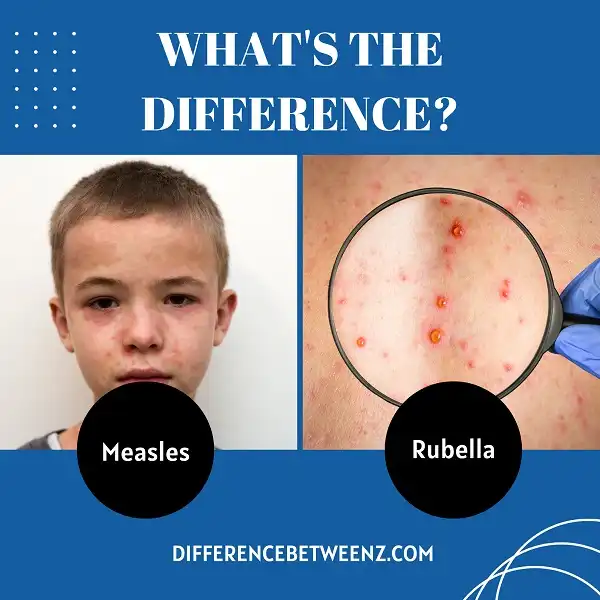One of the most common childhood illnesses is measles. It is a highly contagious virus that can cause serious health complications. However, there is another illness that is often confused with measles called rubella. While they share some similarities, there are key differences between these two illnesses. Let’s take a closer look at the symptoms and treatment of each one.
What is Measles?
- Measles is a highly contagious disease caused by the measles virus. It is spread through contact with respiratory secretions, such as saliva, mucus, or blood, from an infected person. Measles can also be spread through contact with objects or surfaces that have been contaminated with the virus.
- The disease typically begins with a fever, followed by a cough and runny nose. A few days later, a rash develops on the face and spreads to the rest of the body. Measles can cause severe health complications, such as pneumonia and encephalitis (inflammation of the brain).
- In some cases, it can even be fatal. Measles can be prevented through vaccination. The measles vaccine is safe and effective, and it is recommended for all children. Adults who have not been vaccinated should consider getting the vaccine if they are planning to travel to an area where measles is common.
What is Rubella?
Rubella is a virus that is closely related to measles. It is most commonly spread through contact with respiratory secretions, such as saliva, mucus, or blood. Rubella can also be spread through close contact with infected individuals, such as sharing utensils or hugging.
- The incubation period for rubella is typically two to three weeks. Symptoms of rubella include fever, rash, and swollen lymph nodes. Rubella is most harmful to pregnant women and their unborn babies.
- If a pregnant woman contracts rubella, she has a higher risk of miscarrying or giving birth to a baby with congenital rubella syndrome (CRS). CRS can cause a range of birth defects, including heart defects, hearing loss, and intellectual disability.
- Rubella can be prevented with vaccination. The Rubella vaccine is typically given as part of the combined measles-mumps-rubella (MMR) vaccine. Rubella is endemic in many parts of the world, but it has been eliminated from the United States thanks to vaccination efforts.
Difference between Measles and Rubella
- Measles and Rubella are two very different viruses. Measles is a highly contagious virus that is spread through the air. Measles symptoms include fever, rash, and runny nose. Measles can also lead to more serious health problems, such as pneumonia and encephalitis.
- Rubella, on the other hand, is much less contagious and is usually spread through contact with respiratory secretions. Rubella symptoms are generally mild and include fever, rash, and swollen lymph nodes.
- However, rubella can be much more dangerous for pregnant women, as it can lead to miscarriage or birth defects. While there is no specific treatment for either measles or rubella, both viruses can be prevented with vaccinations.
Conclusion
Although they may seem similar, measles and rubella are two very different viruses. Both can cause fever and a rash, but that is where the similarities end. Measles is highly contagious and can lead to serious health complications, including pneumonia and encephalitis. Rubella, on the other hand, is much less deadly and rarely causes any long-term health problems. If you think you or your child may have contracted one of these diseases, it is important to get diagnosed as soon as possible.


